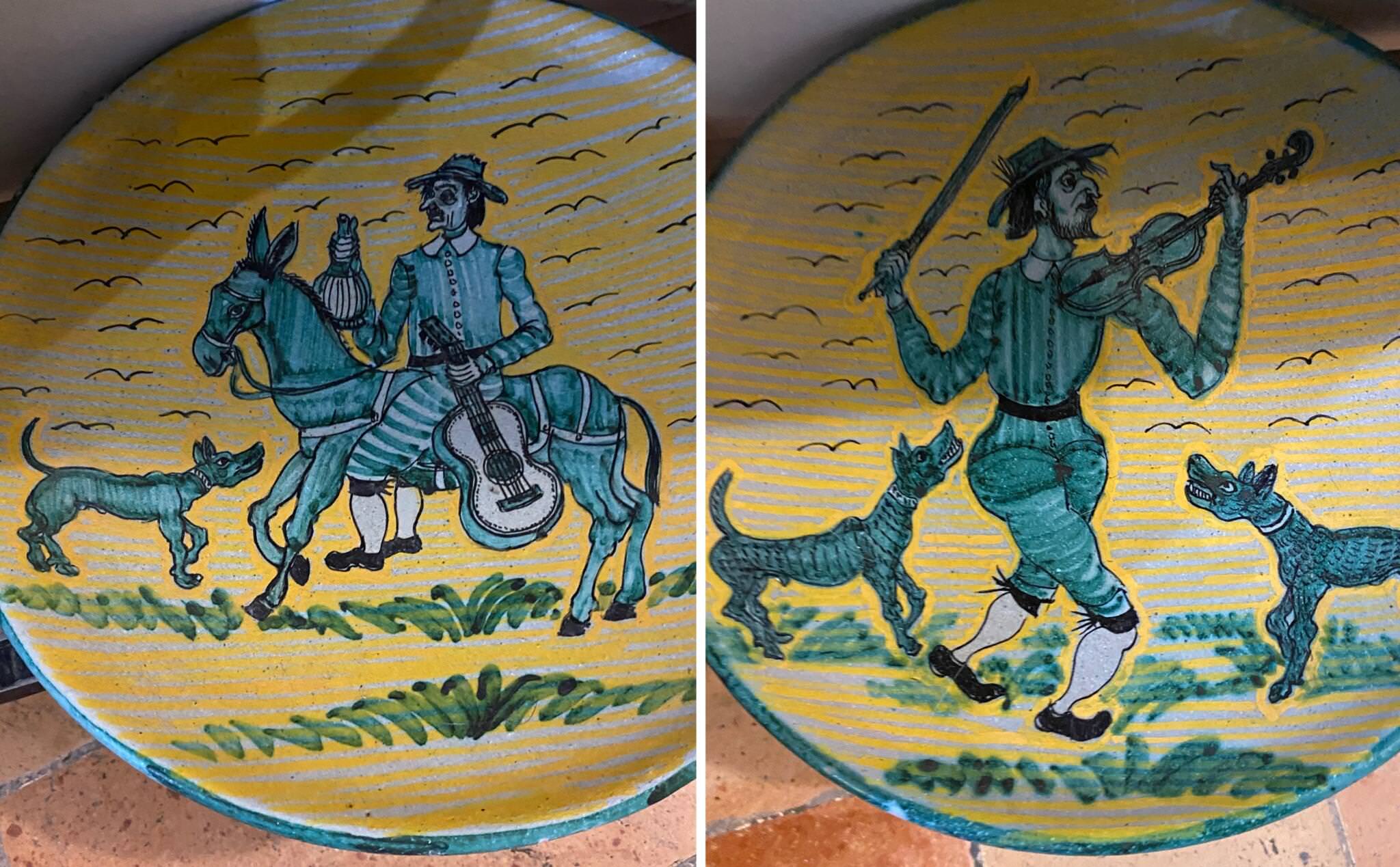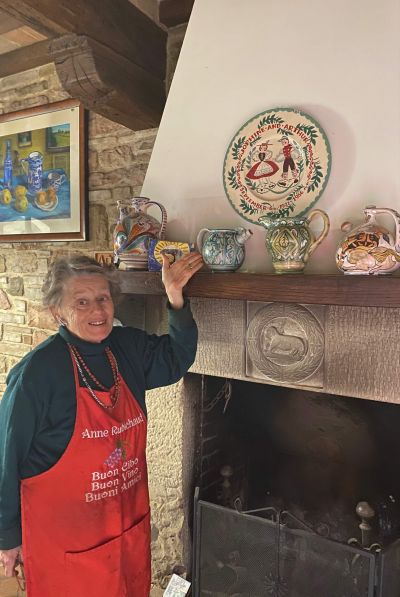L'articolo parla dell'arte di Maceo Angeli, che è morto quasi 32 anni fa. L'autrice dell'articolo ha avuto l'opportunità di fare un tour delle opere di Maceo con la figlia Ginevra. Durante il tour, Ginevra ha spiegato le opere, i dettagli e la vita di suo padre. Ha anche descritto come suo padre avesse una grande passione per la musica e si può vedere come la musica abbia influenzato la sua arte. L’autrice ha visto anche le sculture e alcuni capolavori in ceramica. Questo tour è stato un'esperienza indimenticabile per lei.
After learning about the straordinario Italian painter Maceo Angeli in a guided visit to his medieval home this past January, I was taken over by a veritable “Maceo passione.” I simply needed to know more about this extraordinary artist who had died in 1991.
I now often ask any middle-aged or elderly ‘assisano’ I encounter, “Conoscevi Maceo?” I recently asked an elderly retired blacksmith, Roberto, as we sipped espressi at the same cafe’ counter. Signor Roberto replied with a beam, “Certamente!” recounting his memories of joining Maceo in the mid-1950’s in the song brigades celebrating the arrival of spring and the welcoming of May with songs accompanied by lutes, mandolins and other medieval instruments, an ancient tradition “lost in time” as the Italians would say.
With Mayor Arnaldo Fortini, in the late 1920’s, the singing in of May had already become a festive Assisi event, though wandering song brigades were not in costume. However, as of 1954, they are!
In Assisi’s early May medieval festival celebrating the first days of May, Calendimaggio, Roberto remembers Maceo as an exuberant, enthusiastic, protagonist of the May celebrations every year and has special memories of the festive events of the 1950’s. The festival then recreated the medieval rivalries between two sections of the town in una sfida canora (“challenge of song”) with Lower Assisi (la parte de Sotto) challenging Upper Assisi (la Parte de Sopra).
During a visit to their home, Maceo’s daughter, Ginevra, and her husband, Umberto, showed me the two pale green ceramic pitchers Maceo had crafted, probably in the 1950’s, depicting a musician gleefully guzzling wine as he rode a donkey, drum latched onto the saddle. One pitcher celebrated la Parte de Sopra, with their tall tower bearing the two gatti mammoni, rural mythological creatures and symbols of la Parte de Sopra. On the other pitcher of la Parte de Sotto, the bearded rider seated near his drum is holding a banner bearing a tower, the symbol of lower Assisi. As we visited, Ginevra talked nostalgically about those past Calendimaggio festivals – celebrated by her father and other assisani – as simply a joyous festa canora (song festival). Nowadays, the four days of celebration include banner-waving contests, crossbow challenges, a medieval choir competition, medieval dance and theater, and much more. Glorious and I never miss it, often sharing the magnificence with enthralled tour guests.
Ginevra talked about her father’s love of all music; he once had a collection including 7 organs, over 70 violins, and an array of medieval instruments. This love joined with his ebullient sense of humor could be seen in many depictions I saw that day in the rich Maceo ceramic collection.
The mandolin-strumming figure on a donkey on one side of a charming duck-shaped pitcher might have been Maceo himself. The playful musician also appears on ceramic plates Maceo made. On one, he rides that omnipresent donkey, guitar in one hand and a wine carafe in the other. On another plate, that bearded musician is oblivious to growling dogs with teeth bared, as he plays his violin.
Ginevra and Umberto showed me comical tiles painted by Maceo, too. On one, a smiling dog walks near the donkey bearing a bearded figure wearing glasses, wine cask tied to his waist and out for a hunt, perhaps, though a bird perches on his gun. On another tile, a grinning priest rides the donkey, wine cask in one hand and a plucked bird in the other. The same smiling dog trots alongside the donkey. On a long-necked vase painted in delicate green tones, a donkey dashes with a smiling man in striped suit riding him while grasping both a chicken and a wine cask.
All that Maceo humor brought a smile when I spied on the wall the “Long live the wedded” (“Viva gli sposi”) plate. A buxom bride rides the donkey with her sposo, that omnipresent wine flask tied to the donkey, a small trunk and a larger wine jug on the back. A pair of playful dogs accompany the happy couple. These pieces were just few of the many Ginevra and Umberto shared with me.
After viewing all of Maceo’s painted, sculpted and ceramic masterpieces displayed in the home of Ginevra and Umberto, I will treasure more than ever the two Maceo pitchers we have on our own mantel, wonderful works of that great artist. And, from now on, at every Calendimaggio, I will think about Maceo, grateful to him for his role in launching the splendor.




